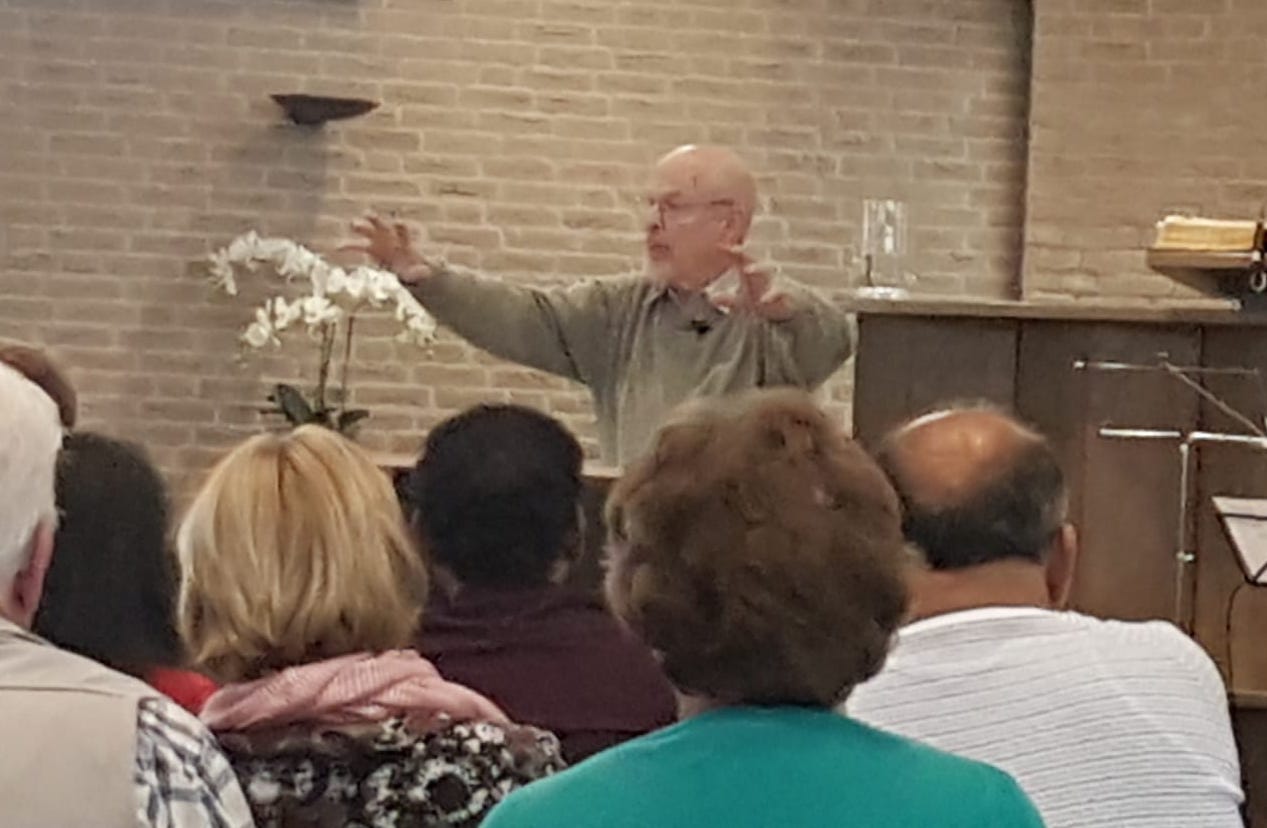Ten Things I Learned from Jesus: for reaching out to our Muslim neighbours in Amsterdam
Introduction and outline in English of the talk given by Drs. J.K. Mellis at the WEC open day in Capelle aan den IJssel, the Netherlands (5 October 2019). Click here to watch the video in Dutch.

I came to Amsterdam from the USA 45 years ago with a calling to work in cities, and a clear leading to work with YWAM here in reaching out to young western travelers who were drawn to this city and to other cities in the East along the so-called ‘hippie trail’. Here I met my wife, Debbie (from Canada) and we were married here in the Netherlands in 1975. At the time of our marriage Debbie already felt called to the Muslim world, and after a couple years I felt this was how God wanted both of us to work with him. But like a lot of Christians, I assumed this meant ‘going’ to do this reach out to people in an unreached nation somewhere in the Muslim World (in the Middle East, Africa or Asia).
But in 1980, God challenged my traditional assumptions about missions, by leading us to begin reaching out to our Muslim neighbors in Amsterdam. And the first thing he told us and the other members of our team to do was to improve our Dutch and build relationships with the Dutch churches in our neighborhood. For we were to be part of something our Father wanted to do in partnership with our indigenous Dutch brothers and sisters. At the same time, God gave me a model from the life of Jesus concerning how we were to reach out to our Muslim neighbors.
So this morning I want to share with you the 10 things I learned from Jesus about how he reached out to an ethnic group of immigrants at the beginning of his ministry – the Samaritan ‘nation’ [Gr. ethnos] (Act.8:9), descendants of 5 immigrant ‘nations’ who were forced to settle in Israel after the 10 tribes were sent into exile (2 Kings.17:34-41), yet who the Jews in Jesus’ day still saw as allochtonen, ‘foreigners’ [Gr. allogenees] (Lk.17:18) who practiced a worship of God that was unbiblical (Jn.4:20). And so Jews generally avoided contact with them and refused to ‘use’ anything Samaritans used (Jn.4:9b). In return, Samaritans tended to be suspicious of Jews and avoided contact with them as well (Jn.4:9a; Lk.9:52-53). Jesus’ Jewish disciples showed the same negative attitude toward Samaritans as other Jews (Lk.9:54; Jn.4:27).
What, then, did Jesus do and say during his visit to the Samaritans (John 4:1-42) that served as a model for his disciples of how to bridge the gap in reaching out to neighbors from a different ethnic group (like our Muslim neighbours in Amsterdam)?
1 (John 4:4)
Jesus looked for what the Father was doing and didn’t follow the attitudes and practices of his own culture.
2 (John 4:6)
Jesus was willing to sit and wait, ask questions and listen—like he had done in the Temple as a 12-year-old boy (Lk.2:46)
3 (John 4:9a,10)
Jesus gave the Samaritan woman the first chance to give, and he taught his disciples to do the same even in their own Jewish culture (Luke 10:8-9). Which is easier, to give or to receive? Jesus knew that the woman would find it easier to give something to him than to receive something from him. Can you think why this is almost always the case?
4 (John 4:10,13-14)
Jesus used an image from their world (the well) to talk about the gift of the Spirit (Jn. 7:35-36). Using parables and stories in our witness, like Jesus did, is still important today. The author’s book of stories, Abu Sharif, The Mystery of the Hundredth Name, makes use many such images from North African and Middle Eastern cultures]
5 (John 4:12)
Jesus didn’t bother to correct everything a Samaritan said that wasn’t true [The Samaritans were foreign immigrants (2 K.17:34-41) and therefore unrelated to Jacob and Joseph].
5.1. When Jesus did correct something (twice): he packaged it with acceptance: ‘the day is coming and is already here when you Samaritans will worship the Father with us Jews’ (Jn.4:21-23). [He also accepted that Samaritans worshipped the same God, even though they didn’t really ‘know’ him (Jn.4:22)]
5.2. Or he wrapped the ‘correction’ in affirmation: ‘You are right’… ‘You spoke the truth’ (Jn.4:17-18) [a ‘word of knowledge’ (Jn.4:18a), or praying for someone is (alongside using ‘concepts’ and ‘stories’) a third form of witness, one that is ‘experience’-oriented)
6 (John 4:15-16)
Jesus sought the woman’s permission to share the Gospel with her family, not just with her as an individual.
7 (John 4:21,23; 42)
Jesus shared Good News of the Father before telling them they needed a Savior. (Jn.4:21,23; 42) The Gospel has three themes, not just one: [this order of Gospel-presentation is the main approach in the my two books of stories, Abu Sharif and Rode Dromer].
7.1. The pre-destined time for worshiping the Father after being 'placed' as adult sons and daughters–through Jesus and the Spirit (Jn.4:14)–has come (see also Eph.1:2-6,13-14, Med.#8; Gal.4:1-7, Med.#4).
7.2. Jesus came to redeem people of all nations by dying for us on the cross as ‘Savior of the world’ (Jn.4:42; see also Gal.3:14; 4:5a, Med.#30)
7.3. Jesus came to gather together all things, including true worshippers of all nations (Jn.4:23) as co-heirs in a new family kingdom with him as head and Lord, according to God’s eternal purpose (see also Eph.3:1-11, Med.#6).
8 (John 4:25-26,28-29)
Jesus listened for ways God had already prepared their culture for the Gospel. Samaritans already had some idea that God would send ‘the Messiah’.
9 (John 4:34,37-38)
Jesus was content to ‘sow’ the seed of the Good News and leave the rest of the conversion process to other teams (see also Acts 8:4-25). For more on the 5 stages in the conversion process related to the Samaritan Story, become a member and watch the video lecture on ‘Biblical Contextualization’
10 (John 4:35-36)
Jesus saw a spiritual harvest coming among the Samaritans, even when his disciples couldn’t see it, because it didn’t look like the revival they had been working with in their own Jewish culture (Jn.4:1-2). In the same way, most Christians are blind to the harvest that has already begun in the Muslim world, starting in the 1960s. (Return to the 'Immigration and the Church in Europe' page and watch the 1st 'trend' in the video of the workshop also given on 5 October: ‘What is our Father Doing: 3 trends and challenges for the 21st century’)
For more on all these 10 lessons drawn from John 4, see an earlier article by J.K. Mellis, ‘Learning to Share the Good News in a Muslim Context’.
